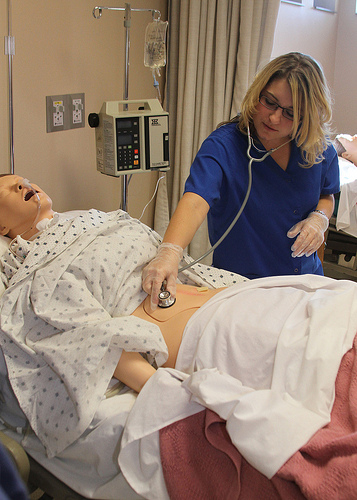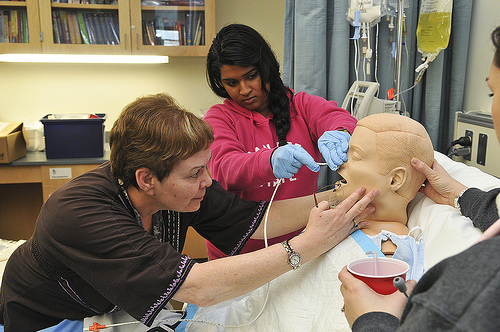Research has shown that there are different types of learners. Some people are kinesthetic, some are visual and some are auditory. It’s the kinesthetic student who particularly enjoys hands-on activities. These students learn by doing; an important consideration, especially in the medical field. Although there are different types of learners, every student can benefit from doing rather than listening.

1.Safe Environment
The ability to practice skills in a safe environment helps to build the confidence of future nurses. Too often, nurses are thrown into the trenches without the previous ability to get hands-on. These nurses often second-guess their decisions and, in the worst cases, make mistakes under the tremendous pressure presented in certain situations. During simulation, nurses can practice both physical and critical-thinking skills. These controlled environments allow nurses to hone their skills in a safe, supportive way.
2.Transferability
There are some things that must be taught using a textbook and lecture. In these cases, it can be difficult to transfer skills to the real world. During simulation, students are able to go slowly, taking the time to think about what they have learned and how to best apply it to the presented simulation. Nurses are able to discern what works and what doesn’t, and can learn from their mistakes without harming patients.
3.Learning
Simulations provide learning opportunities themselves. Instructors can present situations that students may be unfamiliar with, allowing nursing students to experiment with what they already know and gain new skills. Doing these types of simulations with humans would never work, and presenting case studies in lecture is simply not the same. Nursing students may be more likely to try new techniques when they know there is no risk of harm.
4.Standardization

Nursing educators are able to assist in the standardization of care by introducing simulated activities to their students. Students learn how to do one thing, one way and do it the same way for every patient. Standards of care are important to ensure the health and wellness of patients, and these standards increase the efficacy with which patients are treated.
5.Feedback
Very few people are able to improve without feedback. In real life scenarios, students do not have the benefit of feedback until a case has been completed or a mistake has been made. In simulated scenarios, students are given immediate feedback. This feedback can help to improve a nurse’s technique or skill. This feedback only serves to turn nursing students into proficient professionals. Nursing educators should be prepared to give both negative and positive constructive feedback to their students to help the students grow.
6.Access
In simulated environments, students are often exposed to professionals earlier in their careers. Students may work alongside oncologists, anesthesiologists or pediatricians as they work on simulations. This exposure presents unique learning opportunities that may not have been had otherwise. Nursing educators are encouraged to invite professionals from a variety of specializations into the classroom during simulations.
Simulated environments are proven to help learners gain new skills. This may be more important in the medical field than in any other. Nursing educators would be wise to pay attention to this research; those seeking medical attention will be depending on the knowledge and know-how of these future nurses.
Brett Harris blogs for criminal justice blogs. Check out his most recent article on the Top Online Schools for a Degree in Nursing Education.

